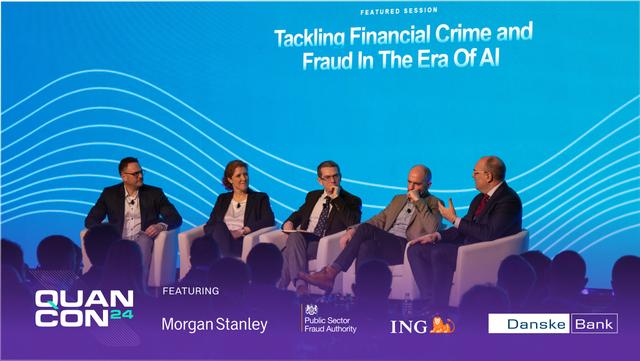Navigating Secondary Sanctions Risk: The Heightened Need to Mitigate Indirect Exposure
Managing secondary sanctions risk and detecting sanctions circumvention starts with understanding your customers, counterparties, and their networks.
Non-U.S. financial institutions face heightened secondary sanctions risk due to the U.S. Executive Order (EO) 14114, which allows the United States to impose sanctions on banks that are deemed to be facilitating the evasion of Russian sanctions and support Russia's military-industrial base. The EO has generated much conversation and concern about how this will impact financial institutions – and how they can manage sanctions risk.
Secondary risks on the horizon
The new EO exposes non-U.S. financial Institutions to indirect sanctions risks based on the facilitation of transactions with unsanctioned parties. This includes providing services to non-Russian customers engaging in transactions related to Russia’s military-industrial base. The complexities of the EO are exacerbated by the broad nature of “dual-use goods” and associated industries that may be determined to be used for Russian military application.
Financial institutions are now carefully evaluating whether their existing compliance programs capture the recommendations. Fortunately, there is technology available today to help protect banks against unnecessary risk.
Adopting a risk-led approach
Mitigating sanctions risk starts with truly understanding your customers and their networks, including associated counterparties, relationships, and supply chain activities. This is made possible by connecting internal and external data into a single, strong data foundation that provides a holistic view of direct and indirect risk. Using this contextual 360-degree view of customers, as well as non-customer counterparties, banks can then build a full network of relationships from different perspectives, removing noise and revealing patterns.
This enables banks to understand their direct and indirect network exposure to secondary sanctions risk. The secondary risks could include counterparties with these characteristics:
connections to sanctioned parties
showing signs of a shell or front company
operating in high-risk industries and trading routes
dealing in high-risk goods
This approach is strengthened by applying analytics and scoring to monitor and detect potential circumvention of sanctions and export control restrictions. The process can include examining the use of transshipment jurisdictions, intermediaries, and agents within transaction flows.
Using technology to mitigate sanctions risk
Once financial organizations have a holistic view of their customers and non-customers connections and behaviors, it’s possible to more effectively detect, monitor, and investigate entities and networks that pose sanctions and export control risks. The data foundation becomes a trusted, renewable, and reusable resource, with benefits across the bank.
Adding such capabilities requires changes in the way banks approach sanctions risk mitigation. For example, analysts and investigators must change how they think and talk about sanctions and export control risks.
The old way was to pose a query such as, “Is this transaction in breach of sanctions regulations?” The new way is to look at the broader network and ask, “Who is sending and receiving this transaction? Do they pose a direct or indirect risk? Do we understand the full nature of the purpose of the transaction, including the ultimate beneficiaries and associated risk? Are they connected to a risky network? Do the supply chains pose risk?”
Equipped with the right technology, banks can leverage data and apply analytics and scoring to better monitor and detect customer behavior that poses sanctions risk. Over time, analysts can see and understand how customer activity has shifted pre- or post-imposition of sanctions, and which customers are dealing in potentially risky trading activity.
Uncovering hidden insights
The value of contextual views is that they allow the detection, monitoring, and investigation of risks that otherwise would not have been found – or even been sought – by analysts.
By proactively addressing real risk, teams can respond more quickly and mitigate exposure, since they’re no longer stuck in a cycle of reactive activity. Teams can also augment decision-making with the context and insight needed to visualize risk and make informed decisions.
Learn more about how Quantexa's financial crime solutions can help you gain a holistic view of data to mitigate sanctions risk and detect potential circumvention of sanctions.



